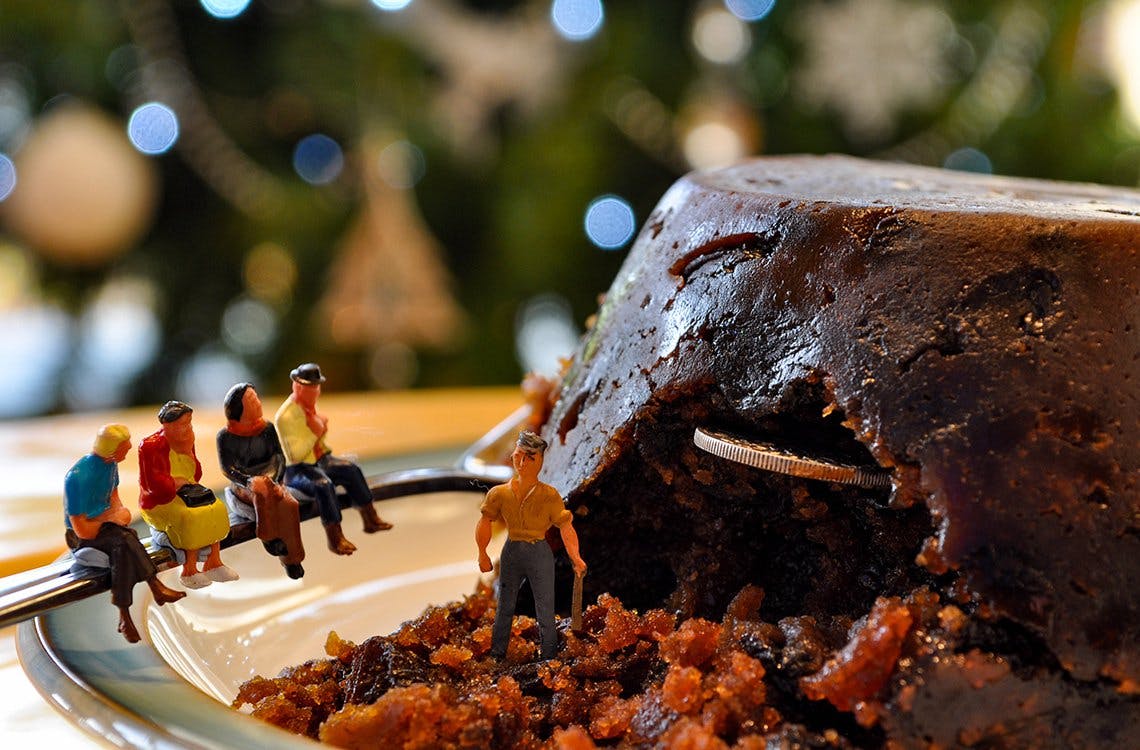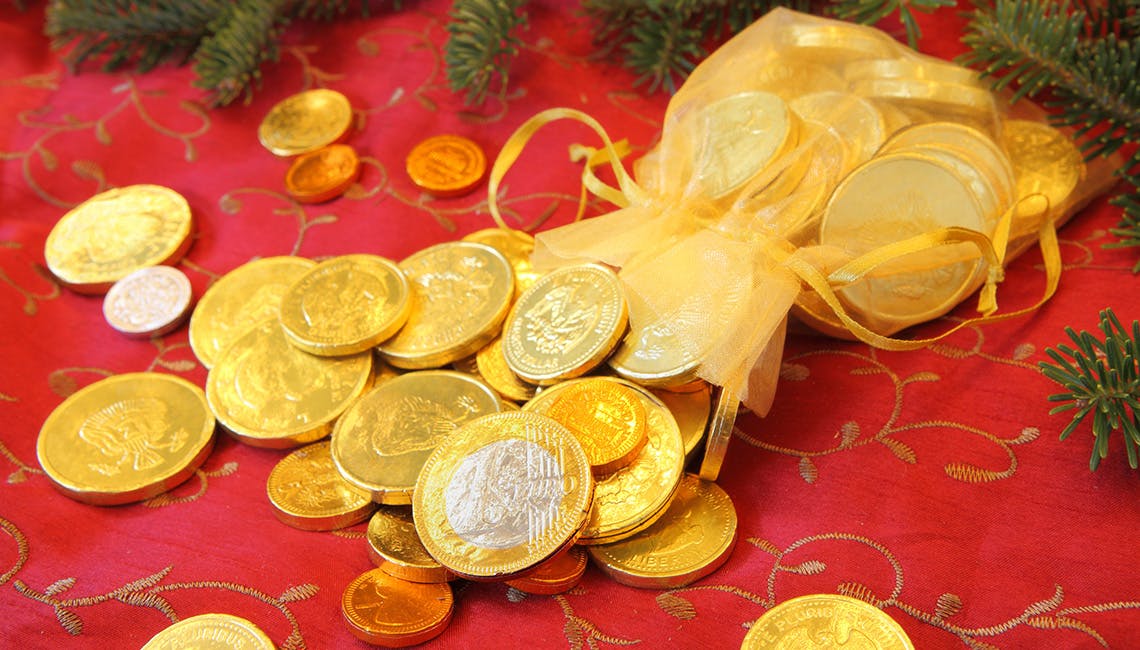
Christmas Cash Customs
Around the world, cash is often at the heart of Christmas celebrations, with notes commonly given as gifts, and coins symbolising wealth, prosperity and even forgiveness in many traditions.
Originating around the fifth century in Greece or Turkey, Saint Nicholas was believed to be a kindly man who stealthily visited houses at Christmas and dropped coins into children’s shoes, socks or stockings. This spread across Europe as a tradition of gifting coins to children, and in Britain in the late 1900s, the Victorians took to decorating their Christmas trees with chocolate coins. Still well-loved today, these are available both in designs matching current or old currencies, and imaginary, festive-themed currencies.
In Malawi, children go door to door in December, singing carols accompanied by traditional instruments in exchange for a few coins. Italy has the same tradition, coming at the end of the Novena—a time of prayer nine days before Christmas—with children performing Christmas songs and poetry for small change. In Nigeria, children also receive gifts from their neighbourhood, typically in the form of cash that they use to buy firecrackers and bangers.
In the run-up to Christmas in Mexico, during Las Posadas (16–24 December), star-shaped piñatas with seven points—one for each deadly sin—are filled with coins and candy. The sticks used to break them represent love, with the treats pouring out of them symbolising the forgiveness of sins and a new beginning.

Chocolate coins
Coins and trinkets are baked into a King Cake, eaten in Portugal, Spain and across Latin America on 6 January to mark Epiphany. In Macedonia, on Kolede’s Eve (5 January) a coin is similarly hidden in bannock bread, and whoever finds it in their slice is named Best Person and given the responsibility for lighting the Kolede’s Eve bonfire.
Spanish and Italian Christmas and New Year’s cuisine features lentils that represent coins—signifying wealth and good luck—often used to make festive soups. The tradition has since been carried to the U.S., where leafy greens are also included thanks to their supposed resemblance to American banknotes. In the Czech Republic, fish scales symbolising silver coins are placed beneath plates during the traditional fish-based Christmas Eve meal, to bring prosperity to the home.
In the UK, families of old stirred a sixpence into their Christmas pudding mixture, and whoever found the coin would supposedly enjoy wealth and good fortune in the coming year. The custom is thought to have been brought to Britain by Prince Albert, the German consort of Queen Victoria, and continues to this day, having also spread to Australia and Canada. Unsurprisingly, there is a common associated Google search: “is it safe to put coins in Christmas pudding?”
